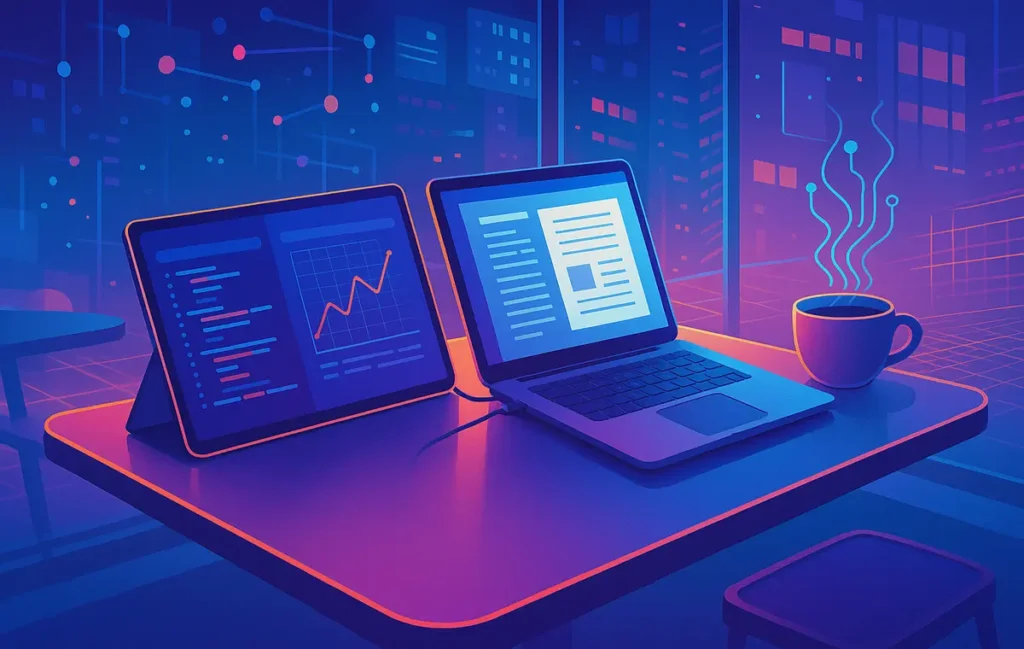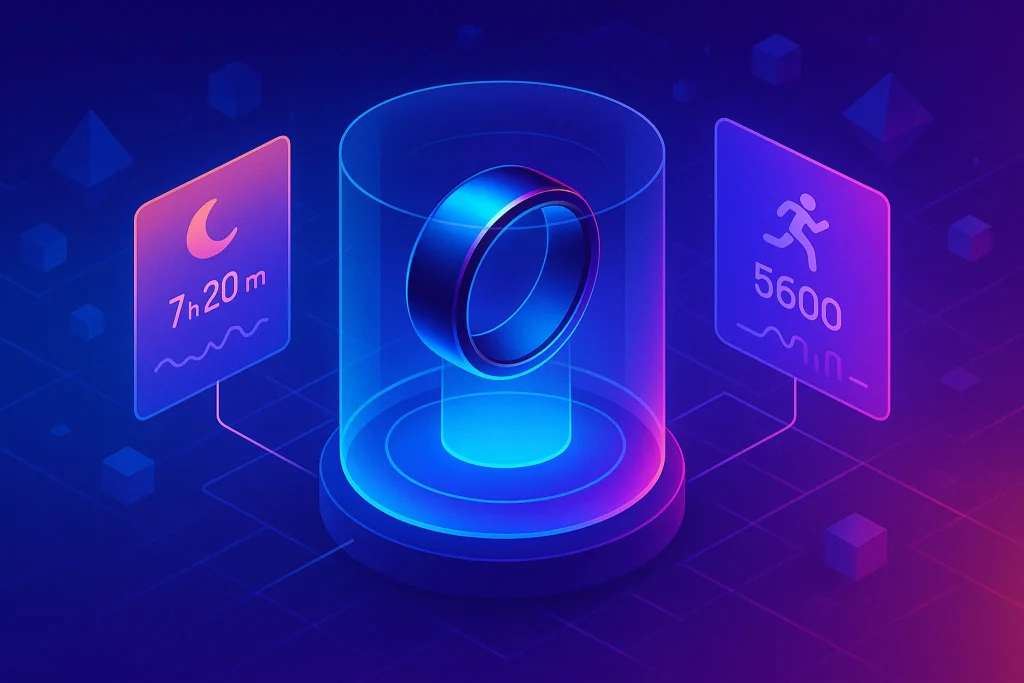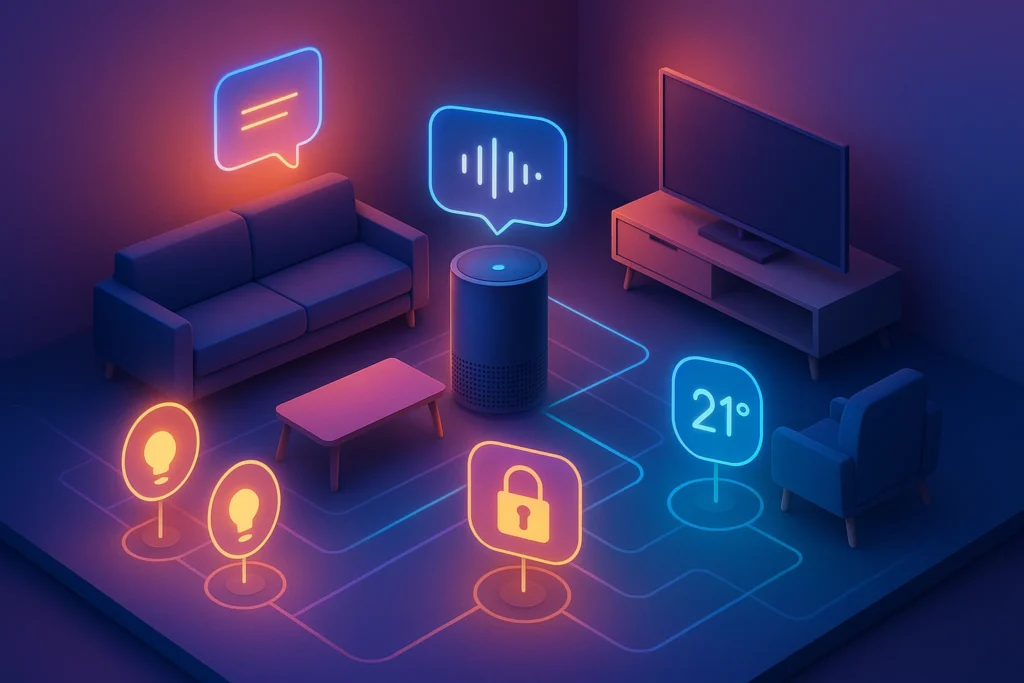🎯 Intro
You’ve got a powerful laptop, maybe even the latest MacBook Pro or a high-end Windows ultrabook. But despite all that power, you always feel like half your productivity gets lost—because you’re limited to a single screen. Scrolling back and forth between documents, switching tabs endlessly, resizing windows just to make room for Slack or Zoom—it’s a bottleneck that no amount of processing power can solve.
That’s exactly where portable USB-C monitors come in. Sleek, lightweight, and powered through a single cable, they let you recreate a full dual-screen setup wherever you are: in a café, on a train, in a co-working hub, or even from your hotel desk.
In a previous NerdChips article, we explored Portable Monitors and Other Underrated Productivity Gadgets. That piece was a broader roundup of useful tools. But this article zooms in on USB-C portable monitors specifically—and more importantly, how they transform on-the-go workflows into something closer to a real mobile office. If you’ve ever wondered whether carrying a second screen is worth it, this is your deep dive.
🔍 Why Portable USB-C Monitors Matter
The past five years have been defined by a rise in remote work and digital nomadism. According to a 2024 Statista survey, more than 35% of knowledge workers spend at least part of their month working from outside their primary office setup. These aren’t just freelancers or YouTubers—it’s designers, analysts, marketers, consultants, even gamers who want to bring their setups on the move.
The difference between USB-C portable monitors and their HDMI-only predecessors is night and day. With HDMI, you needed separate power, bulky adapters, and sometimes even drivers. It felt more like a temporary hack than a seamless tool. With USB-C, the game changes: one cable delivers both power and video, instantly recognized by macOS, Windows, and even many Android phones.
💡 Nerd Tip: Always check whether your laptop’s USB-C port supports “DisplayPort Alt Mode.” Without it, the monitor won’t receive video—even if the cable physically fits.
Unlike older portable displays that drained external power banks quickly, modern USB-C models are designed with efficiency in mind. Some even include pass-through charging, letting you keep your laptop powered while connected. That’s crucial when you’re working remotely and need your battery to stretch across a full day.
🛠️ Best Portable USB-C Monitors in 2025
When evaluating which monitor deserves a spot in your backpack, a few contenders stand out. Here are the leading choices in 2025:
ASUS ZenScreen MB16ACV
ASUS has dominated this category for years, and the ZenScreen remains a benchmark. Weighing just 1.7 lbs, it offers a 15.6-inch 1080p IPS panel. The integrated stand, antibacterial coating, and hybrid USB-C/USB-A compatibility make it versatile for both business and casual use. For writers, consultants, and students, this monitor hits the sweet spot of price, portability, and reliability.
Lenovo ThinkVision M14t
Lenovo’s approach is simple: professional-grade clarity, featherweight portability. The ThinkVision M14t is a 14-inch FHD touchscreen that supports pen input, making it perfect for digital note-taking or light sketching on the road. At just 1.3 lbs, it’s one of the lightest on the market. For anyone who spends time marking up PDFs, drawing wireframes, or brainstorming visually, this is an unmatched option.
ViewSonic TD1655
This monitor balances affordability with touch functionality. It’s slightly heavier at 2 lbs, but you get a sturdy build, HDR support, and a responsive touchscreen. If you’re someone who switches between spreadsheets and Netflix marathons on hotel Wi-Fi, it’s a solid all-rounder.
InnoCN Portable OLED Monitor
OLED has made its way into the portable space, and the InnoCN 15.6-inch model showcases why it matters. With deep blacks, wide color gamut, and razor-thin bezels, creatives love it for color-critical work. Photographers editing RAW files or video editors reviewing footage on the go will immediately see the benefit over standard IPS panels.
SideTrak Swivel
SideTrak takes portability a step further by physically attaching to your laptop. The Swivel design lets you mount the monitor directly onto the laptop’s lid, turning it into a folding dual-screen laptop setup. It’s slightly thicker and less sleek in your bag, but if you want maximum speed and minimal setup time, SideTrak is unbeatable.
📊 Key Features Compared
To make sense of the options, let’s map the most important differences:
| Monitor | Weight | Display Quality | Touch/ Pen | Battery | Price Range |
|---|---|---|---|---|---|
| ASUS ZenScreen MB16ACV | 1.7 lbs | 1080p IPS | No | Laptop-powered | $$ |
| Lenovo ThinkVision M14t | 1.3 lbs | 1080p IPS | Yes (pen included) | Laptop-powered | $$$ |
| ViewSonic TD1655 | 2 lbs | 1080p IPS, HDR | Yes | Laptop-powered | $$ |
| InnoCN OLED 15.6 | 1.9 lbs | OLED, Wide Gamut | No | Laptop-powered | $$$$ |
| SideTrak Swivel | 2 lbs+ | 1080p IPS | No | Laptop-powered | $$$ |
💡 Nerd Tip: Don’t underestimate weight. A 2 lb monitor might sound light—but added to your laptop and accessories, it can make a real difference during travel days.
🚀 Dual-Screen Productivity On the Go
Studies consistently show that dual monitors improve productivity by 20–30% depending on workflow. For writers, the second screen becomes a dedicated research or outline view. Designers keep tools on one screen and a live canvas on the other. Data analysts run dashboards side-by-side with reporting tools. Gamers can even stream gameplay on one screen while monitoring chat and stats on the second.
When you’re stationary at home, setting up dual monitors is easy. But what about when you’re on the road? That’s the unique power of USB-C portable monitors: they collapse into your backpack but expand your workflow dramatically. Instead of juggling Chrome tabs while drafting a report, you can keep Slack or Notion open alongside your main project. Instead of resizing Figma windows, you get a dedicated space for full-screen preview.
In fact, in our previous NerdChips article on How to Use Multiple Monitors Like a Pro, we broke down desk-based strategies. What’s different here is the portability factor. With USB-C monitors, you’re no longer chained to your desk. You can bring “pro” productivity wherever you go—without bulky stands, external power, or adapters.
⚠️ Challenges & Solutions
Of course, portable USB-C monitors aren’t perfect. The biggest challenge is power consumption. Many ultrabooks already struggle to last a full workday, and adding a second screen accelerates the drain. Solution? Invest in a USB-C hub with power delivery passthrough. That way, you can keep both your laptop and monitor powered from one adapter.
Another issue is screen glare outdoors. IPS and OLED panels aren’t built for bright sunlight, and even anti-glare coatings have limits. The practical fix is using a simple foldable laptop hood or working at angles where glare is minimized. Some users even carry a matte screen protector just for outdoor work.
Lastly, compatibility can be tricky. Not all USB-C ports are equal. On some laptops, only specific ports handle video. On others, the firmware may limit resolution. Always check your device specs before investing. If in doubt, refer to our guide on How to Connect Two Monitors to a Laptop for compatibility breakdowns.
⚡ Ready to Expand Your Mobile Office?
Explore the ASUS ZenScreen and Lenovo ThinkVision series—two of the best USB-C monitors for professionals on the go. Slim, reliable, and designed for real productivity.
🌍 Real-Life Case Studies: Productivity in Action
Sometimes the best way to understand the impact of portable USB-C monitors is to look at real users. These aren’t just hypothetical scenarios—they’re workflows that many professionals face daily.
Take the case of a freelance designer who spends hours juggling between Figma and Slack. Before adopting a portable monitor, every client revision meant switching tabs, resizing windows, and breaking focus. After adding a 15.6-inch portable display, the designer could keep Slack or Discord open on one screen while keeping Figma in full view on the other. The result? Faster responses, fewer mistakes, and a 30% quicker project turnaround—measured directly by client delivery time.
Now consider a financial analyst on business trips. Hotel rooms and airport lounges are not ideal workplaces, yet the analyst needs to keep Excel dashboards open alongside Bloomberg data streams. A Lenovo ThinkVision M14t provided the solution: one screen for market updates, the other for financial models. The ability to cross-check figures in real-time wasn’t just about convenience; it meant catching discrepancies that could cost thousands of dollars.
And then there’s the gamer-streamer category. For those who broadcast gameplay from laptops, the challenge is always screen real estate. A SideTrak Swivel mounted directly to a laptop lid lets them keep Twitch chat, OBS controls, and Discord on one screen while playing full-screen on the other. This seamless setup transforms an ordinary laptop into a portable streaming rig.
💡 Nerd Tip: Frame your own “before and after” story with portable monitors. Track how many minutes you save by not tab-switching. The time adds up faster than you think.
🪑 Ergonomics & Health Benefits
Portable monitors aren’t only about getting more done—they also improve how you feel while working. Laptop users often complain about neck strain and eye fatigue caused by staring down at a single, low-placed screen. By introducing a second monitor, you gain more flexibility in setting up your workspace ergonomically.
For example, rotating a portable USB-C monitor vertically is a game-changer for coders and writers. Instead of scrolling endlessly, you see more lines of code or paragraphs at once. This reduces repetitive movements and keeps your posture steadier. Similarly, creatives can place the monitor at eye level, reducing the forward-head tilt that contributes to back pain.
Another subtle but important benefit: eye comfort. With a portable display, you can keep reference materials, emails, or chats open without constant resizing, which reduces visual stress. And since many 2025 models come with TÜV-certified low blue-light filters, long sessions become easier on your vision.
In short, the “health ROI” is just as real as the productivity ROI. Your body will thank you after a week of dual-screen work on the go.
🔋 Battery & Efficiency Hacks
One of the first concerns people have about portable monitors is power drain. It’s true: running two screens means using more energy. But with smart strategies, you can manage battery life effectively.
Start by controlling brightness. Most portable monitors are shipped at 80–100% brightness, which is unnecessary indoors. Lowering it to 50–60% can add an extra hour of laptop usage. Models like the ASUS ZenScreen even have ambient light sensors that auto-adjust brightness to reduce drain.
Second, choose monitors with auto-sleep functions. This ensures the monitor powers down when you close the laptop lid or unplug it, preventing background drain.
Third, leverage USB-C hubs with power delivery passthrough. With one good hub, you can connect the monitor and still charge your laptop simultaneously, eliminating the “which device gets the port?” problem.
For digital nomads who rely on co-working cafes or long train rides, carrying a compact 65W GaN charger ensures you can power everything with one adapter. These small tweaks mean you don’t have to sacrifice mobility for power.
💡 Nerd Tip: If battery anxiety is a real blocker for you, pick a model with its own built-in battery. It adds some weight but keeps your laptop free of extra load.
🔮 Future Outlook: What’s Coming for Portable USB-C Monitors
Portable displays are still evolving, and the next two years will bring breakthroughs that reshape this category. Expect 2K and 4K lightweight panels to become mainstream, reducing the compromise between portability and resolution. Already, OLED is setting the bar for creatives, and as costs fall, more models will adopt it.
Another frontier is built-in operating systems. Some manufacturers are experimenting with monitors that run Android OS independently. Imagine carrying a monitor that doubles as a tablet or mini workstation without even needing a laptop.
Perhaps the most exciting development is foldable or rollable panels. Companies like LG and BOE have already showcased prototypes of bendable displays. By 2027, we may see portable monitors that fold like a book or roll into a cylinder, making them even more practical for backpack workflows.
For NerdChips readers, this future outlook is important because buying today doesn’t just solve a short-term problem—it’s part of a long-term shift toward ultra-portable, multi-screen workstyles.
💼 Pro Setup Inspirations
To spark your imagination, here are some real-world setups showing how professionals are already using USB-C monitors on the go:
-
Digital Nomad in Bali: Picture a content creator sitting in a café overlooking rice fields. On the laptop screen: editing a YouTube video. On the portable monitor: analytics dashboard showing real-time audience engagement. The dual-screen setup makes creative work feel like a home studio, even 10,000 miles away.
-
Consultant on a Train: Corporate consultants often prepare client decks on the move. With PowerPoint on one screen and financial models on the other, a two-hour train ride becomes a productive sprint instead of wasted time.
-
Gamer in a Hotel Room: Gaming on the go used to mean compromises. But with a portable monitor, a gamer can connect a Switch or Steam Deck to one display while using the laptop to manage mods, chat, or Discord calls. It’s not just functional—it’s immersive.
Each scenario shows that portable USB-C monitors are more than a gadget. They’re an enabler of lifestyle choices, letting you stay fully functional whether you’re working, creating, or playing.
📬 Want More Smart Tech Insights?
Join the NerdChips weekly digest and get insights on productivity gadgets, AI tools, and future-ready workflows—delivered straight to your inbox.
🔐 100% privacy. No noise. Just actionable ideas for creators and professionals.
🧠 Nerd Verdict
Portable USB-C monitors have crossed the line from “nice-to-have” to essential productivity gear. For anyone who works remotely, travels frequently, or simply values multitasking without compromise, the investment pays off within weeks. The difference in workflow between one screen and two is massive. And unlike other gadgets, these monitors slot into your workflow seamlessly—no drivers, no bulky extras, just plug and work.
If your goal is dual-screen productivity on the go, these monitors are no longer optional. They’re the new baseline for creators, analysts, gamers, and digital nomads alike.
❓ FAQ: Nerds Ask, We Answer
💬 Would You Bite?
Would you rather keep working on a cramped single screen, or carry the freedom of dual-screen productivity anywhere you go?
Crafted by NerdChips for creators and teams who turn any desk into a dual-screen powerhouse.



